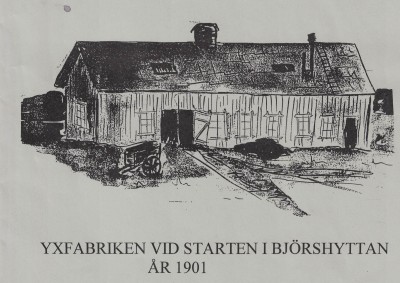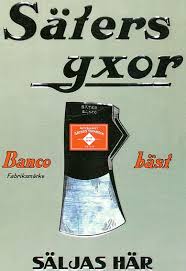Säter
1901 – 1907
For a few years at the beginning of the century, there was axe factory at Björshyttan. One could say that this factory was a coincidence. Two smiths from Vikmanshyttan, Gröning and Silvén (the name uncertain) met one day near the Nisshyttan village of Björshyttan. Gröning thought it might be appropriate for a water wheel at the fall and to make axes on the site.
Silvén thought about Gröning’s idea and went to Säter for a day and talked with the counsellor Carl Rundqvist, a man with contacts in the business world. He liked the idea and became the company’s financial guarantor. The waterfall in Björshyttan with its land was rented from Nisshytte kronopark. Axe factory was built and people moved to the neighbourhood to work at the new factory. Hjalmar Svensson from Vedevåg became a master of the new industry. His brothers Axel and Edvard and Gustav Hård left Vedevåg for Säter. Another three brothers came to Björshyttan: Emil, Elis and Simon Fernström. All became Säterbygden faithful.

1907 – 1966
The factory became crowded after a few years when volumes went up, and in 1907 Rundqvist built a new factory in the town of Säter. There axes were manufactured until the end of 1966.
In Björshyttan you can still see remains of the former axe factory. The dwelling house where the axe painter Svensson lived, remains, now as a summer residence.
In 1966 the factory was finally closed. The forge was then bought by the Norwegian company Mustad who moved production to Norway. Carrying on the Säter Banko, Säterpilen and Mustad Banko brands.
Eventually they too where bought out by Oyo in 1971 who continued the Säterpilen and Oyo Mustad Norway brand until 1974. After 1974 they consolidated the brand under the name Oyo Norway and continued production into the early 2000s.


International Shipping!
Tracking provided for all orders leaving Sweden